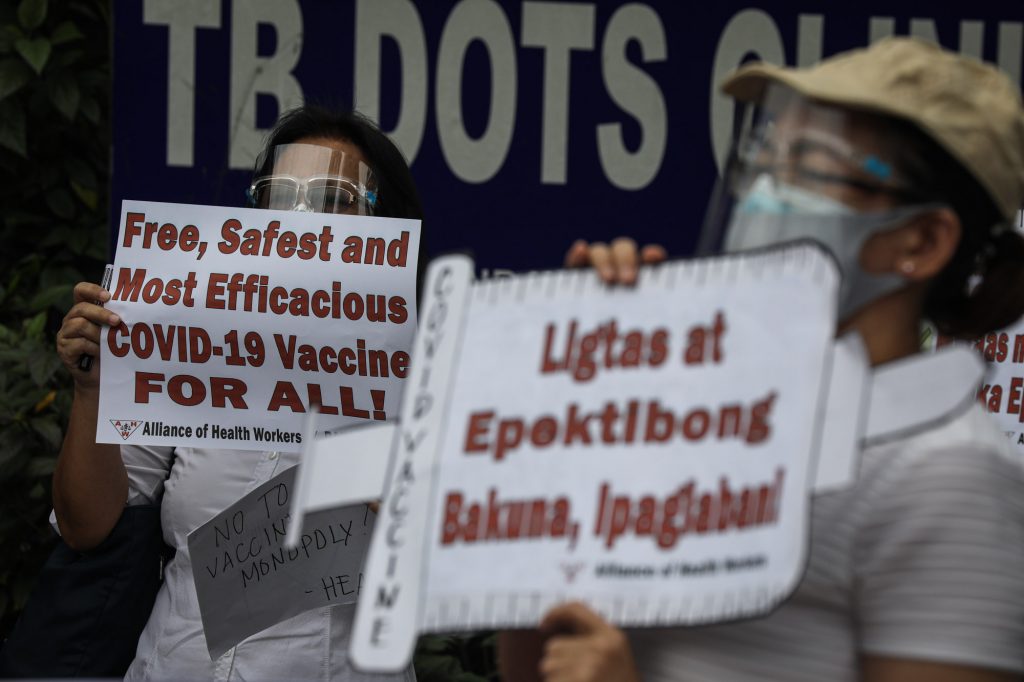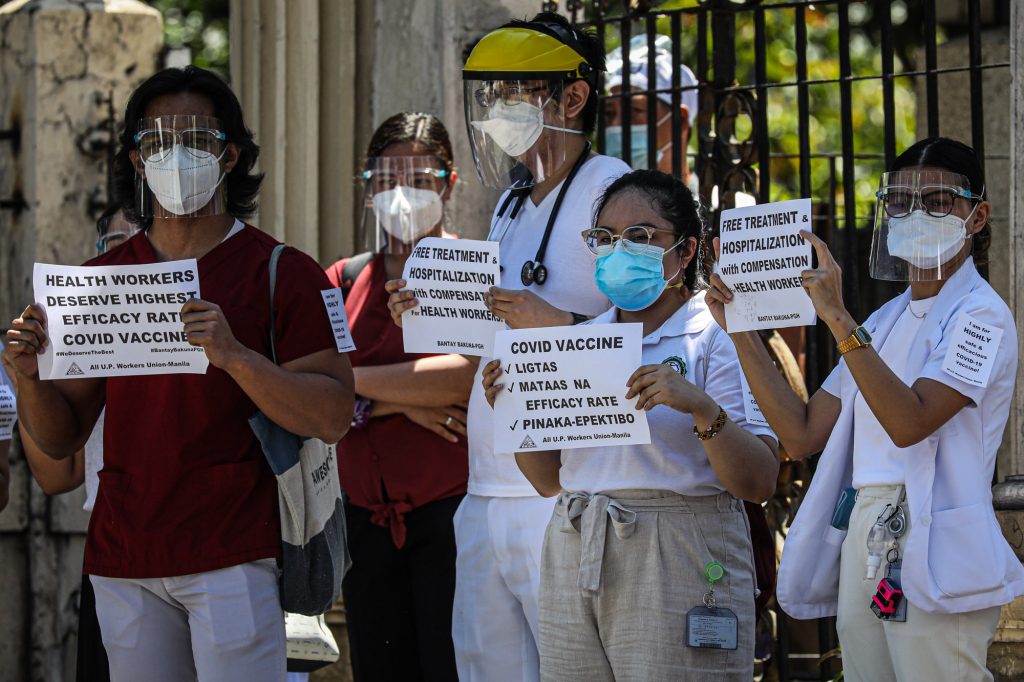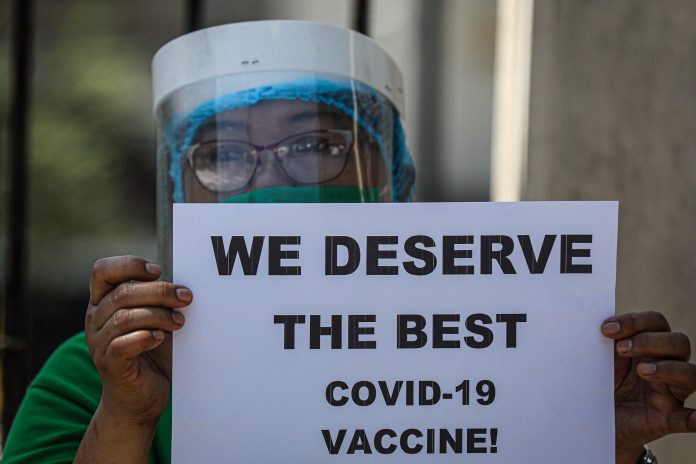Catholic Church leaders in the Philippines appealed to the government to set aside politics in the implementation of the country’s vaccination program against the new coronavirus disease.
“Let us not politicize [the vaccination program],” said Camillian priest Dan Vicente Cancino, executive secretary of the Episcopal Commission on Health Care of the bishops’ conference.
“To our politicians, please don’t go ahead of others. Let us prioritize our healthcare workers,” said the priest in an interview over Church-run Veritas 846.
“Let us follow our prioritization [program],” he added.
The government’s priority list was also set aside, as several government officials, including vaccine procurement chief Carlito Galvez Jr., were among the first to be given the China-made CoronaVac shots that were supposed to be only for health workers and uniformed personnel.
Father Cancino, meanwhile, advised Filipinos not to be complacent even if the vaccine against the dreaded COVID-19 is already in the country.
“Let us continue wearing face masks and face shields,” said Father Cancino, adding that all health protocols should be followed the observance of physical distancing, washing of hands, and sanitation.
No to mandatory vaccination
Meanwhile, the country’s biggest group of unions, the Associated Labor Unions, called on the government to outlaw as “discriminatory and coercive” the mandatory “no vaccination, no work” policy being imposed by some companies.
Complaints reaching the labor union said some workers were already told that they would not be allowed to report to work unless they participate in company-sponsored COVID-19 vaccination activities.
The workplace tension came about following a recommendation of the government’s economic cluster to place the entire country under a “modified general community quarantine” that allows more industries to open.
The strain was further exacerbated by enterprise-based internal survey results showing a large number of working people unwilling to be vaccinated for fear of negative repercussions to their health.
The Associated Labor Unions said a “mandatory workplace policy” on vaccination is a form of coercion and discrimination that violate the right of workers to freely decide and chose for themselves with regard to their health and well-being.

No to China-made vaccine
The Catholic chaplain in the Philippine General Hospital has voiced concern over the use of vaccines from China on health workers.
“I’d rather wait for the best one if there is one coming,” said Jesuit priest Marlito Ocon, adding that the vaccines from China are not the only one arriving in the country.
“It is not as if it’s the only vaccine that we will have to take the risk,” he said in a radio interview, adding that everyone should be safe “for the sake of the people we serve, our patients, and all frontliners here in the hospital.”
The priest said he is confident that the government is doing its best to ensure that the public will get the best vaccine against COVID-19.
Several health workers have earlier denounced the “inconsistent” official policies on the use of the coronavirus vaccine developed by China’s Sinovac Biotech.
Employees of the Lung Center of the Philippines who belong to the nationwide Alliance of Health Workers staged a demonstration on Monday, March 1, to show their dismay at the rollout of the Sinovac vaccine, CoronaVac.
“We are dismayed at the sudden turnaround in the decision of the government to inoculate health workers with [the vaccine from] Sinovac, sacrificing the health and safety of the health workers,” said Robert Mendoza, president of the alliance.
He said the health workers were asking why the government proceeded to use CoronaVac, 600,000 doses of which were donated by China, even if the Food and Drug Administration (FDA) did not recommend it for health workers, the elderly, and people with existing illnesses.
Dr. Eric Domingo, head of the the FDA, received a CoronaVac shot on Monday, going against his own verdict on Feb. 22 that the vaccine is not the best one for health workers taking care of COVID-19 patients.

South African variant in the Philippines
On Tuesday, March 2, the Health department said the Philippines has already documented six cases of the South African coronavirus variant, raising concern among experts that the current vaccines might be less effective.
The Philippines started its COVID-19 vaccination campaign this week, an important milestone for a country among the hardest hit by the pandemic in Asia, but the discovery of another variant could complicate its recovery effort.
“While there is no evidence that this variant causes more severe disease, the pattern of mutations within this variant suggests higher transmissibility and may have an impact on vaccine efficacy,” the Health department said in a statement.
Of the six cases with the South African variant, three were detected locally and two were Filipinos returning from overseas. The origin of the other case was still being verified.
The Philippines has so far found 87 cases with the more transmissible variant.
As of March 2, an additional 2,067 COVID-19 cases has been reported, bringing the total coronavirus infections in the country to 580,442.
Based on the Health department’s case bulletin, the active cases of COVID-19 in the country now stands at 33,610.
Meanwhile, 144 more patients have recovered from the disease, pushing the number of COVID-19 survivors to 534,463.
There were also additional 47 patients who have died. The total death toll is now at 12,369.
The active cases represent 5.8 percent of the total case count, while recoveries and deaths are 92.1 and 2.13 percent of the tally, respectively.
Of the active cases, 89.8 percent are mild, 4.8 percent are asymptomatic, 2.3 percent are critical, 2.2 percent are severe, and 0.85 percent are moderate cases.









